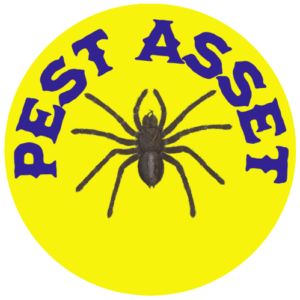
The Ultimate Guide to Preventing Fleas: Expert Tips
Table of Contents

Introduction
Welcome to our comprehensive guide on preventing fleas, the pesky parasites that can cause discomfort for both humans and pets. As experts in pest management, we are dedicated to providing you with valuable insights and effective strategies to help you keep your home and pets flea-free. By implementing the preventive measures outlined in this guide, you can create a safe and healthy environment for your family and furry friends.
Understanding Fleas: The First Step in Preventing Fleas
What Are Fleas?
Fleas are small, wingless insects that feed on the blood of mammals and birds. These agile pests have specialized mouthparts for piercing the skin and consuming blood. Flea infestations can be challenging to control due to their rapid reproductive rate and ability to survive in various environments. According to the Centers for Disease Control and Prevention, fleas can jump up to 13 inches vertically and 7 inches horizontally, making them highly mobile and difficult to catch.
The Lifecycle of Fleas
Understanding the flea lifecycle is crucial for effective prevention. The Companion Animal Parasite Council outlines the four stages of flea development:
- Egg
- Larva
- Pupa
- Adult
This knowledge helps in targeting prevention efforts at different stages of the flea’s life.
The Risks of Fleas
Fleas pose several risks, including:
- Bites and Irritation: Flea bites can cause itching, redness, and discomfort for both humans and pets. Some individuals may develop allergic reactions to flea saliva, leading to more severe symptoms.
- Disease Transmission: Fleas can carry and transmit diseases such as murine typhus, tapeworms, and bartonellosis. The World Health Organization notes that fleas can even transmit plague in certain parts of the world. Preventing flea infestations is crucial for reducing the risk of these diseases.
- Pet Health Concerns: Fleas can cause anemia, skin infections, and allergic dermatitis in pets. The American Veterinary Medical Association emphasizes that flea prevention is essential for maintaining the health and well-being of your furry companions.
Effective Flea Prevention Strategies
1. Regular Pet Grooming and Cleaning
Regular Pet Grooming
- Brush your pets regularly using a flea comb to help detect and remove any fleas or flea dirt.
- Bathe your pets using a veterinarian-approved flea shampoo, ensuring thorough rinsing.
- Trim your pets’ fur to minimize flea hiding spots and make detection easier.
- The Cornell Feline Health Center provides additional insights on flea control for cats.
Cleaning Your Home
- Vacuum your home frequently, paying special attention to carpets, rugs, and upholstered furniture. Dispose of vacuum bags in sealed plastic bags.
- Wash your pet’s bedding, blankets, and toys in hot water (at least 130°F/54°C) to eliminate any flea eggs or larvae.
- Regularly sweep and mop hard floors to remove any potential flea eggs or larvae.
- Consider using a steam cleaner for deep cleaning, as the heat can kill fleas at all life stages.
2. Yard and Outdoor Area Maintenance
- Trim your lawn regularly and remove debris or overgrown vegetation where fleas might thrive.
- Create a barrier between your yard and outdoor wildlife, as they can introduce fleas. The National Pesticide Information Center offers tips on reducing wildlife habitats near your home.
- Consider using nematodes, natural predators of fleas, to control their population in your yard. The University of Florida’s IFAS Extension provides information on using beneficial nematodes for pest control.
- Keep your yard dry, as fleas thrive in moist environments. Fix leaky outdoor faucets and ensure proper drainage.
3. Flea Control for Pet Living Spaces
- Treat your pets with veterinarian-recommended flea control products, such as spot-on treatments or oral medications.
- Use flea collars or flea-repellent products as an additional preventive measure. The FDA’s Center for Veterinary Medicine provides guidance on choosing safe and effective flea control products.
- Consult your veterinarian for guidance on the most suitable flea prevention options for your pets, considering factors such as age, health status, and lifestyle.
- Implement year-round flea prevention, as fleas can survive indoors even during colder months.
4. Natural Flea Prevention Methods
- Use diatomaceous earth (food-grade) in your yard and on pet bedding. This natural substance can dehydrate and kill fleas. The National Pesticide Information Center offers information on using diatomaceous earth safely.
- Plant flea-repelling herbs in your garden, such as lavender, mint, and rosemary. While not a standalone solution, these plants can complement other prevention methods.
- Consider using essential oils with caution. Some, like cedarwood and lemongrass, may repel fleas, but always consult with a veterinarian before using them on or around pets.
5. Flea Prevention for Multiple Pet Households
- Treat all pets simultaneously to prevent reinfestation between animals.
- Isolate new pets and treat them for fleas before introducing them to your existing pets.
- Create a flea prevention schedule to ensure all pets receive timely treatments.
6. Professional Pest Control
- If flea infestations persist despite your preventive efforts, consider consulting a professional pest control service.
- Professional pest control experts have the knowledge, experience, and access to effective treatments to eliminate fleas from your home.
- They can also provide tailored advice on preventing future infestations based on your specific situation.
Conclusion: A Holistic Approach to Preventing Fleas
In conclusion, preventing fleas requires a multi-faceted approach that involves regular pet grooming, thorough cleaning of your home, maintaining your yard, and utilizing appropriate flea control products. By implementing these strategies consistently, you can significantly reduce the risk of flea infestations and protect the health and well-being of your family and pets.
Remember, prevention is key when it comes to fleas, so be proactive and consistent in your efforts. Stay informed about the latest flea prevention methods by regularly consulting reputable sources such as veterinary associations and pest control experts. With diligence and the right strategies, you can enjoy a flea-free environment and the company of your beloved pets.
By following this comprehensive guide on preventing fleas, you’re taking an important step towards a healthier, more comfortable life for both you and your pets. Stay vigilant, and don’t hesitate to seek professional help if you encounter persistent flea problems. Together, we can keep those pesky fleas at bay!it comes to fleas, so be proactive and consistent in your efforts. Enjoy a flea-free environment and the company of your beloved pets.


